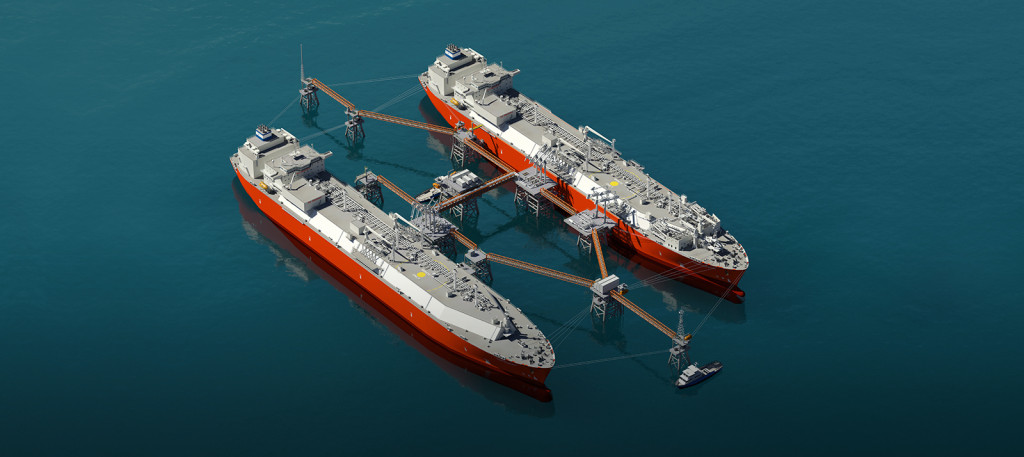An Oil & Gas 360® exclusive interview
Based on the developments in early 2017, it appeared that the era of long-term contracts in the LNG industry had just about faded into the sunset. With a surge in supply, buyers attempted to adjust terms to their preference, hoping to eliminate destination clauses and shorten contracts.
But it looks like the pendulum is now swinging back the other way.
According to Steven Miles, Washington, D.C.-based chair of Baker Botts’ LNG Practice, long-term contracts are probably here to stay. As Miles told Oil & Gas 360®, “I think that buyers have switched in the last few months from fear of overcommitting, ‘FOOC’, to fear of missing out, ‘FOMO’.”
Trends in both demand and price are supporting the transition back to longer term gas contracts, encouraging companies to lock in gas now. The world economy is in a very unique position, with every single country tracked by the OECD predicted to grow in 2018. This boosts demand for LNG, as gas positions itself as a major fuel in the continued energy transition.
New demand
Chinese demand has grown significantly over the past few years, as the country attempts to hurry its mandate to replace coal with gas. China imported record levels of LNG during the 2017-2018 winter, and it is positioned to become one of the most important consumers of the fuel.
“Who would have guessed five years ago that you’d have Kuwait as an LNG importer, United Arab Emirates as an LNG importer, Bahrain talking about being an LNG importer, Saudi Arabia now talking about being an LNG importer? So, there is new demand that is sort of sprouting up like green shoots,” Miles said.
Price recovery
LNG prices have also recovered in the past year, along with oil prices, which serve as the benchmark to most Asian LNG contracts. According to the Wall Street Journal, LNG prices have risen from historic lows, recently reaching a three-year high.
These developments have spurred LNG buyers to take action. And long-term contracts are more palatable once again.
During the worst portions of the supply glut, the common view went something like, “no sense locking in a long-term price because it’ll be cheaper next week, and no sense overcommitting if there will be plenty of supply in the future” according to Miles. But the current market has discouraged this view, as an improving demand outlook means current contracts may not supply all future demand, and making up the difference on the spot market may be an expensive process.
Long-term contracts are needed to lock in project backers
The mechanics of LNG projects also incentivize forming long-term contracts. Constructing an LNG terminal typically involves tremendous amounts of capital. Tellurian (ticker: TELL) for example recently signed $15.2 billion in contracts for the engineering, procurement and construction of its Driftwood LNG terminal.
$15 billion is a large amount of capital, but some projects can cost significantly more. Chevron’s Gorgon LNG project in Australia has been estimated to cost $54 billion.
Financiers are unlikely to back these projects without large commitments from buyers. “Good buyers are what it takes to launch a project,” Miles said. “Good, creditworthy buyers who want to buy in bulk. They are still in demand.”
OAG360: What is driving the modular LNG export facility business model?
“I think they’re being driven, again, by buyer demand,” Miles told Oil & Gas 360®.
“There are fewer buyers at the moment who want super-large quantities. To launch these modular projects, you’re putting together groups of buyers with smaller quantities, particularly some of the buyers who are new to market.
“The countries that are new to importing LNG—their demands are smaller, maybe the gas infrastructure in a country isn’t built out quite as much yet, and so their overall demand is less.
“The more modular approach is intended to reduce costs but also to tailor the project to smaller customers, customers with smaller demand, so that you can launch with exactly as many units as you need, and you can turn the plant up and down, turn units on and off, in order to meet customer demand.”
Some contract provisions are changing
However, just because the markets are strengthening and launching bigger projects essentially requires long-term contracts does not mean contracts in coming years will be identical to those before the downturn.
“The low-price environment that we went through the last two or three years had some positive impacts,” Miles said. “It enticed the industry to look for ways to expand their market and to make their product more valuable to buyers.”
This can take many forms, as different buyers have different needs. “Sometimes that works its way through quantity clauses, sometimes it’s in price, sometimes it’s through investment options, sometimes it’s reintegrating the value chain, sometimes it’s disaggregating the value chain,” Miles said.
One contract provision that will likely be left by the wayside is destination clauses. Historically, many LNG contracts contained clauses that prevented reselling the fuel. Buyers chafed under these terms, and some groups have begun to take action to eliminate them.
In July the Japan Fair Trade Commission ruled they were illegal in certain contracts, potentially upending the country’s LNG trade.
Efforts to eliminate destination clauses have also been seen in Europe, as the EU made a similar, but less formal announcement. More recently, the EU and the Japanese government entered into a formal memo of understanding saying they were going to work together to promote destination-free contracts. These efforts have been relatively successful, according to the President of Tokyo Gas Takashi Uchida. “Asia is set to follow up,” he said, “The global trend is clearly toward lifting destination clauses.”
FSRUs make importing LNG easy for countries that need natural gas
Another trend that could be highly influential is the growth of floating storage and regasification units (FSRU).
These are vessels that operate as LNG import terminals, loading and storing the liquefied gas from an LNG tanker, then regasifying it into an importing nation’s pipeline infrastructure.
“By storing the LNG and then regasifying it, putting it into the local pipeline at the rate that it’s needed, it turns LNG into a pipeline product, where you’re getting it exactly at the rate you want it. And that is a big advantage for some onshore users of natural gas,” Miles said.
These vessels make it much simpler for a country to become an LNG importer, and have several advantages for LNG buyers.
An FSRU commonly anchors several miles offshore, meaning it doesn’t need valuable coastline to exist, like a permanent, land-based import terminal does.
FSRUs are also attractive for project developers, as they offer more flexibility than onshore terminals. As Miles put it “it’s easier to finance because if the project really goes wrong, you may be able to weigh anchor and sail the ship away. For a project onshore, you’re kind of left having to exercise a lien on what’s basically scrap metal.”
With most estimates predicting significant growth in LNG supply in coming years, shifts like the elimination of destination contracts and use of FSRUs will have major lasting effects on the industry.


